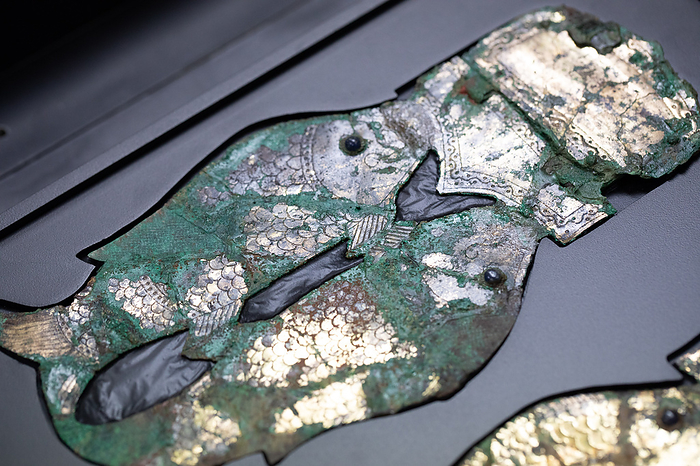
ED
1600-Year-Old Burial Mounds Preserved in a City of One Million
The technique of chasing on the surface of fish-shaped ornament. By observing in detail, the representation of the scales and fins are engraved on fish- shaped ornament with chisel while moving little by little. By observing in detail, the representation of the scales and fins are engraved on fish-shaped ornament with chisel while moving little by little.
By observing detail, the representation of the scales and fins are engraved on fish- shaped ornaments with chisel while moving little little. During the Kofun Period, Japan did not have the technology to produce iron, and it was imported from the Korean Peninsula. The advanced techniques to process that iron and turn it into swords and tools also came to Japan from China via the Korean Peninsula. The climbing kiln used to bake the haniwa also came to Japan from the Korean Peninsula. The different goods excavated from kofun show the influence of those regions on Japan 1600 years ago, and the level of exchange that existed with the rest of the Korean Peninsula. The different goods excavated from kofun show the influence of those regions on Japan 1600 years ago, and the level of exchange that existed with the rest of East Asia.
The Tsudo-shiroyama Kofun in Fujiidera was built in the late fourth century, and in addition to viewing it from the outside it is possible to walk around its grounds as well. With seasonal flowers such as Japanese irises, plum, and cherry blossoms, it is a park-like place for locals to relax. With seasonal flowers such as Japanese irises, plum, and cherry blossoms, it is a park-like place for locals to relax. A burial chamber was found in this kofun, and the objects excavated included mirrors, weapons, and a massive stone coffin.Â
Â
Only one moat remains surrounding the kofun, but archeological surveys have shown that there was originally another moat outside that one as well, Â Only one moat remains surrounding the kofun, but archeological surveys have shown that there was originally another moat outside that one as well, indicating that the total area would have been significantly larger than it is now. Over time, people stopped thinking of it as a kofun, and fields and homes were built on its grounds.Â
Â
Over time, people stopped thinking it as a kofun, and fields and homes were built on its grounds. The city of Fujiidera began a policy in the 1960s to speak with landowners and gradually buy all the land up to the kofunâs original borders. As a result of these efforts, part the area EEround 42,600 square metersEhas become public property, moving it closer to its original state. The local government has stated, âOver the next one or two hundred years, we would like to restore the kofun to its original state with the understanding of the residents. Over the next one or two hundred years, we would like to restore the kofun to its original state with the understanding of the residents.
Details
ID
126164349
Collection
License type
Editorial
Photographer
Creation date
11-05-2020
Contact Aflo for all commercial uses.

More
Top Categories
